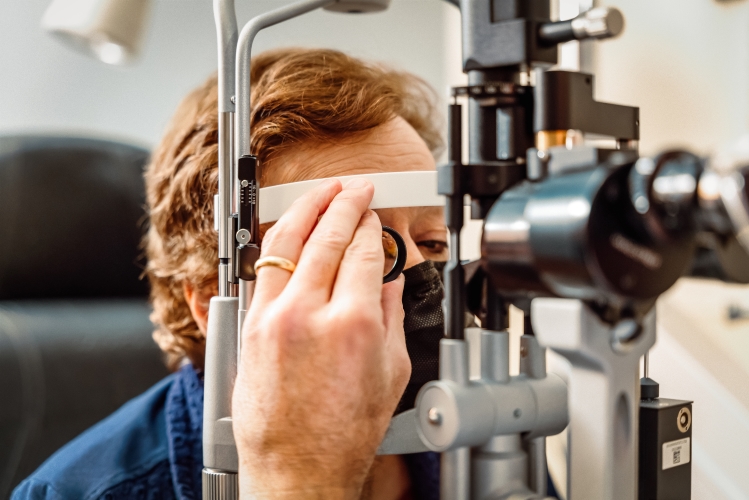Like the rest of your body, your eyes change as you age. Losing the ability to see objects or faces up close, needing more time to adjust to lighting changes, and struggling to distinguish colors are just a few ways your eyes can change over time. Some age-related eye conditions are met with a heightened sense of urgency – such as detached retina and wet age-related macular degeneration – while others, like dry eyes or blepharitis, can be dealt with as needed.

Dry Eyes
Dry eyes occur when tear glands cannot make enough tears or the tears produced are of poor quality. The production of tears tends to decline after the age of 40, and most patients over the age of 65 will have some symptoms of dry eye.
Symptoms include itching, burning, light sensitivity, blurry vision, and even eye fatigue. In some cases the opposite can occur, causing an overproduction of tears. In any case, a general ophthalmologist can help get you on the proper treatment plan to help alleviate your symptoms.
Macular Degeneration
Age-related macular degeneration is one of the leading causes of blindness in elderly patients. This is due, in part, to the macula thinning over time. This gradual degeneration results in a loss of central vision, making it tough to drive and read. While age is a leading factor in the presence of age-related macular degeneration, other factors like obesity and smoking can contribute to AMD. Currently, there is no cure; however, there are treatments that can delay the progression of macular degeneration.
Cataracts
Cataracts are the most common eye conditions related to old age, as nearly half of all adults aged 75 and older will have them. Cataracts form when the eye’s lens thickens and becomes cloudy causing hazy or blurred vision. Cataracts can be small or large and you can have one or multiple. Patients with diabetes, increased sun exposure, or who use certain medications are at an increased risk of developing cataracts. Through cataract surgery, an ophthalmologist who specializes in cataracts can remove the cloudy lens and replace it with a lens implant that’s right for you.
Presbyopia
Presbyopia is the loss of ability to see objects up close or fine print, and it is typically the first eye condition you might experience as you age. The onset of presbyopia occurs gradually, with most patients not noticing visual changes until they are between 35 to 40 years old. You might notice that you are reading material better when it is at arms-length, or you might get eye fatigue trying to read. Adults with presbyopia will also usually benefit from additional light, like a phone flashlight, to read small print. Glasses can typically improve this normal, albeit frustrating, age-related eye condition.
Blepharitis
Blepharitis is the inflammation of the eyelids. It occurs when the eyes become red, crusted, and itchy. Swelling and even stinging can occur. Patients with blepharitis typically have skin conditions like rosacea and seborrheic dermatitis. Eyelid problems like blepharitis are common in elderly patients. It can be kept under control by practicing proper eye hygiene (washing near the lash line with warm water) or dealing with the underlying skin condition. An oculoplastic specialist might recommend treatments like steroid eye drops or the use of artificial tears to relieve discomfort as well.
For an expert ophthalmologist in Plantation, look no further than Fort Lauderdale Eye Institute. Our team is comprised of board-certified ophthalmologists who specialize in various eye conditions, including the ones mentioned above. Contact us today at 954-741-5555 to schedule a consultation for you or a loved one.






